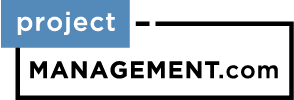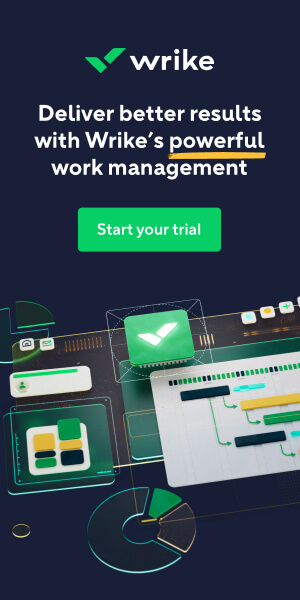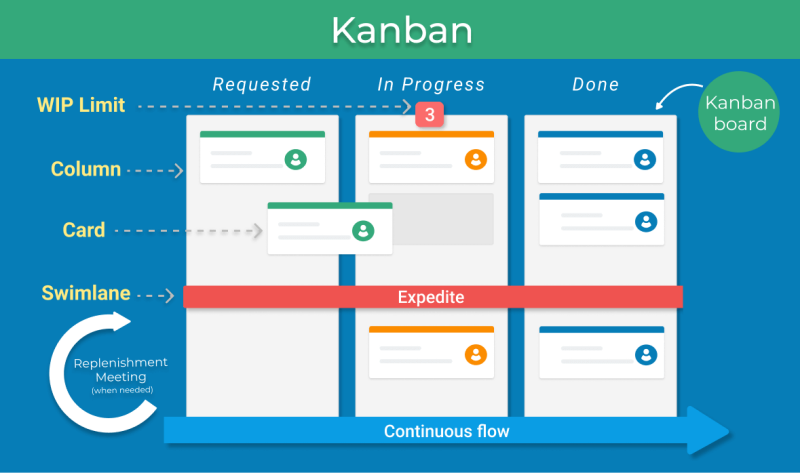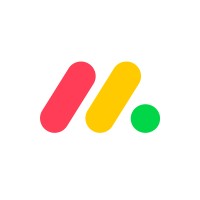How is one to create a project plan that spans a long time period, involves several people, and potentially crosses multiple geographical areas, time zones, and possibly even incorporates multiple projects? A modern Gantt chart, also known as a modern timeline, is one of the best project management tools available to view project tasks that are scheduled over a time period, as well as providing information on overall project progress.
Featured Partners: Project Management Software
What Is a Gantt Chart?
A Gantt chart is a computer-generated visual diagram that combines nested lists, bar charts, and timelines into a visual representation of the order and timing of a project. A list of activities appears on the left of the document. An interval timeline, usually in days or weeks, appears on top and spans the rest of the document to the right of the vertical activity list. A horizontal task bar appears opposite an activity or task with its length displaying duration.

At a glance, it is easy for project managers to see which tasks appear first, which ones will end later, and which ones have a longer duration. In comparison to a bar chart, a Gantt chart offers much more rich and actionable data. The Gantt chart allows project managers and their teams to view the sequence of tasks, critical task dependencies, task duration, and overall project duration. Users can create Gantt charts from scratch. Alternatively, there are Gantt chart templates available in Gantt chart software solutions, as well as Gantt chart tools included in general project management software.
Some big names in Gantt chart software include:
Named after American engineer and management consultant Henry Gantt, the traditional Gantt chart was developed in the early 1900s and was drawn by hand. Today, teams use modern Gantt charts to manage and monitor projects. Here, we’ll cover what a Gantt chart is, what its main uses are, its limitations, as well as the two main benefits to project management — along with a visual example of a Gantt chart. For all intents and purposes, when we refer to a “Gantt chart,” the “modern” is implied.
Video:
What Are Gantt Charts Used for?
Below are a few of the main ways that Gantt charts are employed.
Project Scheduling
A Gantt chart displays more than just project status. Gantt charts deliver detailed project timelines according to projected tasks and their deadlines. They can also provide a bird’s-eye view of information, such as summary tasks and overall project progress, or a worm’s-eye view, which looks at more specific task progress and who is responsible for it.
Gantt charts display the relationship of tasks over time and the project sequence, task dependencies, critical path, and milestones. It is a vital project plan that keeps teams organized and on the same page.
Project Stage Overview
A Gantt chart can cover the entire project lifecycle, but allows you to hone in on divisions, phases, or parts of a project. With a Gantt chart, users can easily expand or collapse sections of a project or zoom in on a small project that’s part of a bigger whole, giving you insight into the work breakdown structure (WBS) of your project.
Project Progress
Gantt charts allow teams to easily update task status and completion. This capability makes project management easier because it automatically updates individual tasks and progress elements of the chart across user accounts/screens, thus displaying the most current task status for all involved.
Read More about the Best Gantt Chart Software for Project Management in 2023
Limitations of Gantt Charts
Teams use Gantt charts mainly for project schedule management. They do not put all project information in a Gantt chart because it is counter-intuitive, defeating the main purpose of the chart. Some information is therefore necessarily absent from a typical Gantt chart project plan.
Other Gantt chart limitations include:
- Managing and updating the chart itself, especially when it’s made from scratch
- Project scope creep
- Limited task visibility
- No display of budget/cost details
- Bar length in horizontal bar chart indicates time duration, but not actual progress ( actual hours of work)
- Difficult to get a general project overview
- Difficult to print out and/or present to others
Benefits of Gantt Charts
Easier Project Planning
As you ramp up a project, a Gantt chart simplifies the planning process in several ways, including but not limited to:
- Prioritizing and sequencing tasks
- Breaking down large tasks into more manageable subtasks
- Linking dependent tasks
- Identifying the project’s critical path and milestones
- Determining the longest sequence of tasks and their duration
Plugins for Seamless Workflows
A Gantt chart is useful for projects of all sizes, but manually tracking and updating a large, complex project is often difficult, exhausting, and inefficient. As such, computer programs do a better job creating Gantt charts. Project management software solutions now include sophisticated features, integrations, add-ons, and plugins that build dynamic and interactive Gantt charts that can make predictions and recommendations to keep projects on track.
Why Use a Gantt Chart?
While Gantt charts certainly do not replace trained and certified project managers, they do make project managers’ jobs easier, allowing them to work and generate project plans more efficiently. They are also more streamlined and easily parsable than something like a pert chart. Gantt charts facilitate project team collaboration and communication by lying out a project plan. Gantt chart software is, therefore, an especially good investment for organizations that execute complex, time-sensitive projects.
Read next: Advantages and Disadvantages of Gantt Charts
Featured Partners: Gantt Chart Software
If you’re interested in learning more about top-rated project management software, the editors at Project-Management.com actively recommend the following:












